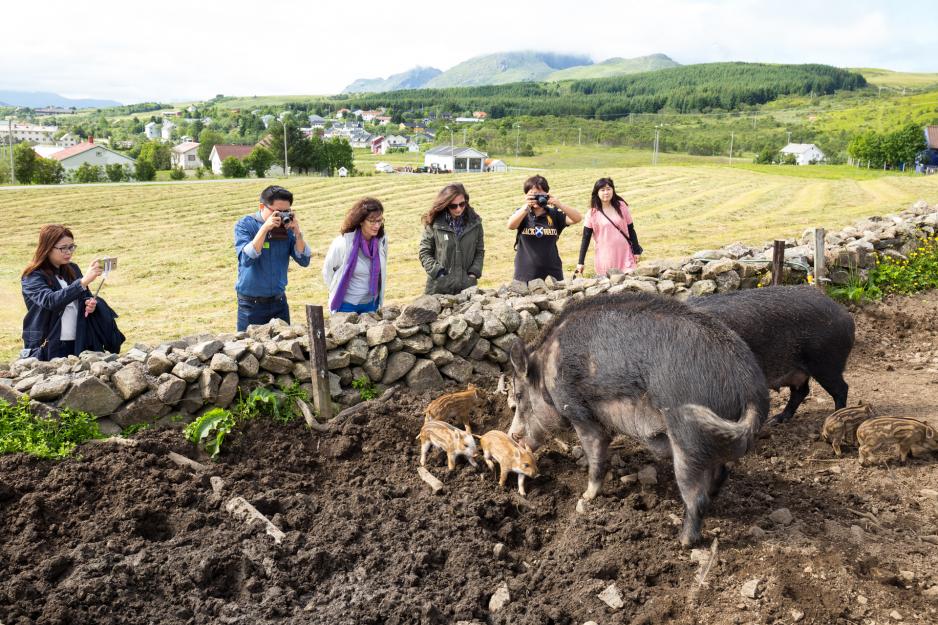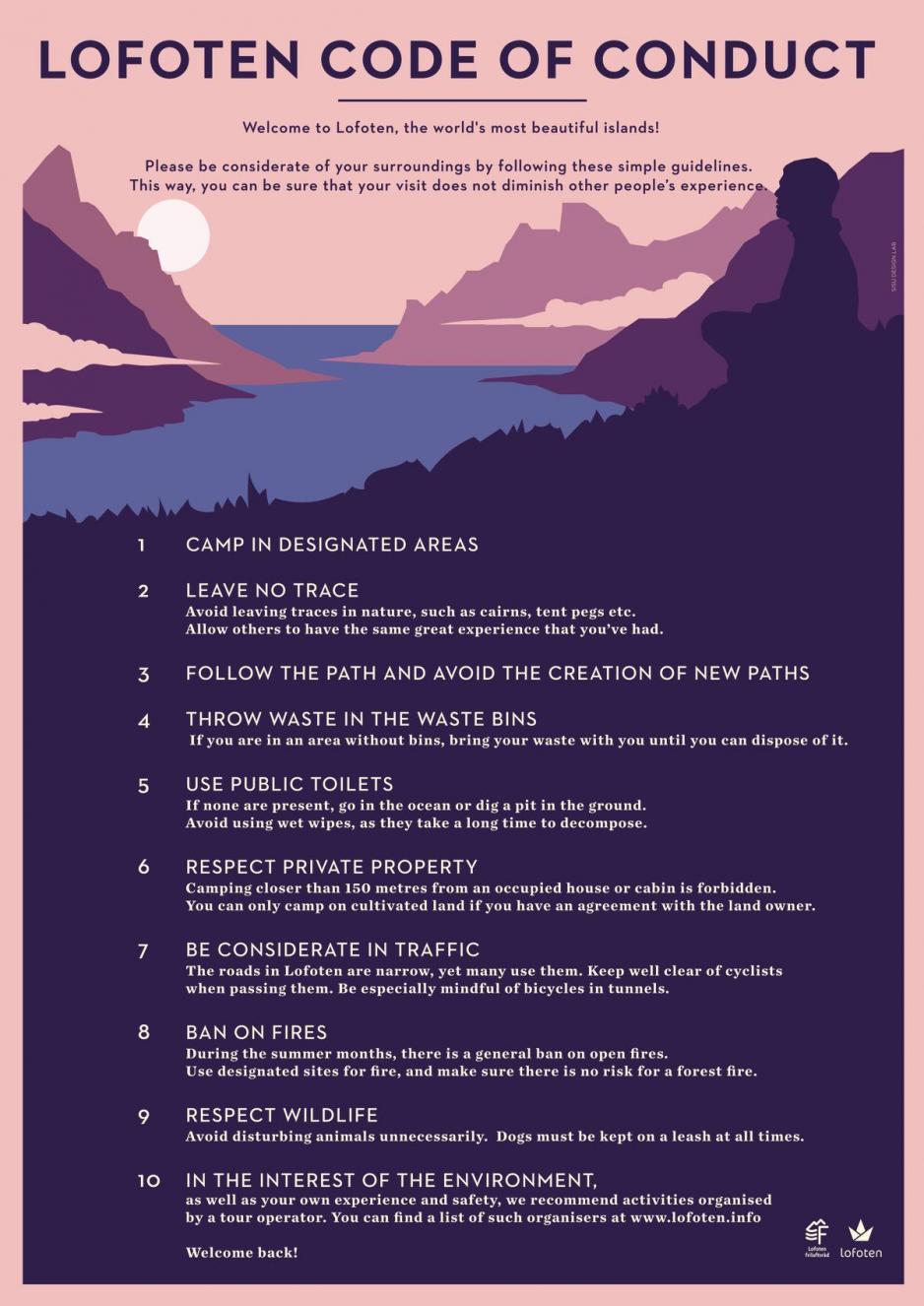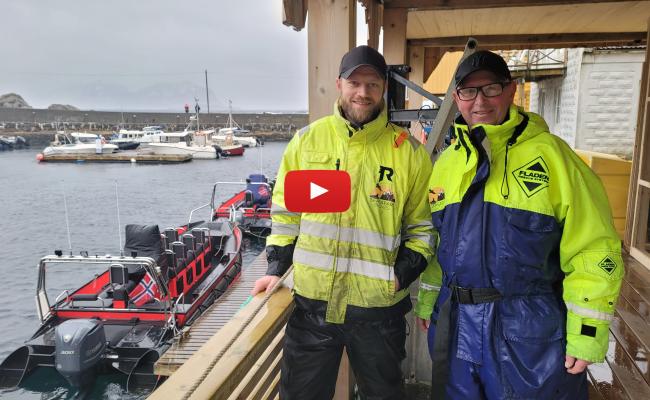Professor Argues Tourists Must Meet Demands: “Tourism Must Take Part in Local Traditions and Culture”

Professor Frank Lindberg at Nord University has researched how the value of a tourist destination changes when measured in turnover and visitor numbers, based on Lofoten. (Photo: Kjell-Ove Storvik/Lofotr Viking Museum)
Arctic societies want and need tourism. “But we must place demands on the tourist industry so that we do not end up with a Canary Islands logic in which tourists believe they are entitled at the expense of local culture, nature and traditions”, argues Professor Frank Lindberg at Nord University.
Arctic tourism is about to find its footing again after a disastrous year due to the pandemic. When the world shut down for leisure travel, tourism more or less broke its back. But parts of the world are opening up again, and at present, Norway is on stage three of its re-opening. Travel regulations change on 5 July, which means travels can be conducted and Norway is open for summer holidaymakers.
The tourist industry may move on and there is hope that tourists now will turn their gaze to the High North. Yet although tourism is wanted and necessary, mass tourism is not necessarily good for all. That goes, in particular, for the local population.
Marketing Professor at Nord University Business School Frank Lindberg has conducted research on how the value of a tourist destination is changed when measured in turnover and visitor numbers, based on Lofoten.
We must offer tourists something else and develop tourist experiences based on what is unique, says Marketing Professor at Nord University Business School Frank Lindberg. (Photo: Private)
“But the results can be applied to popular tourist destinations all over the Arctic”, says the professor and points out that there are several things that shape tourism, for better or worse.
Stop using paths
He has a.o. researched how tourism changes the way the local population uses its own nature and towns.
“When paths are defined as ‘tourist nature’, the local population often stops using it. One would usually think tourist companies drive this development through building everything from hotels to experiences offered on the international tourist market. But there has been little focus on the consequences of such development over time”, the Nord professor says.
“As for Lofoten, we know that there are several views on how the destination should develop as a market. We have found two sets of value:
- The market develops through further professionalization of private tourism actors
- Respect is paid to those who actually live in the place
If the local population does not enter into the development of tourism at an earlier stage, the view of the tourist industry will be dominant.
The new normal
Lindberg explains that business interests often change what it means to have nature in a tourist destination. Nature is there and does not change, but the symbolic significance of nature changes over time. Tourism actors need nature to attract tourists and develop tour paths and tourist ports that were previously fisheries ports or local cattle paths. In a longer term, this becomes the new normal.
“If the local population does not enter into the development of tourism at an earlier stage, the view of the tourist industry will be dominant. To some, such year-round urbanization is great, whereas others consider it a disaster”, Lindberg says.
He points to the consequences that external capital’s coming in without links to tradition and value sets has for the local population. A new kind of service culture evolves. It would be hard if this were to be developed based on tradition.
“This is a challenge in a High North context. The tourist industry is based on individuals’ satisfaction of their needs, and private actors hold a lot of power. They can acquire areas, build resorts, and thus develop destinations based on the premises of capital”, the professor says.
A warning sign
“When external capital comes it, it is often not very concerned with developing attractions and experiences based on the unique character of the place. And it can control the entire value chain and barely leave any values. That is a danger signal for a destination in the High North, which has vulnerable nature and culture”, Lindberg says.
Also read
“Another thing is the fact that the fisheries tradition constitutes the foundation for Lofoten’s very existence. A tradition that defines to a high extent what the place means, and not least; what time means. There are the Lofoten fisheries in winter and spring, and once that intensive period was over, there was time to relax and do other things”, the professor says and continues explaining:
“But when the tourist industry develops tourist markets, it is redefined. It is no longer about the three months of Lofoten fisheries, with its associated traditions and logics. Tourism becomes a year-round phenomenon. Over time, that logic is assimilated – symbolically – and no one questions whether this is how it is to be. Because there is a demand for tourism also due to the jobs it provides”, the professor says.
Residential tourism
What should be done to prevent this kind of tourism, now that society is opening up again?
“Everyone I interviewed in Svalbard and the High North are pro tourism. We depend on developing solid tourist destinations. However, sustainable tourism is the future, and no one can escape that today.”
Sustainable tourism is to take economics, nature and inhabitants into account. If actors cannot see tourism in relation to local traditions and culture, local authorities have to introduce requirements, according to Lindberg. He refers to it as ‘residential tourism’, where tourists are welcomed in to local values and traditions.
Must introduce requirements
“We cannot allow tourists to base their journey on their own satisfaction of needs. We should introduce requirements. We have to enhance a kind of tourist and tourism in which the unique culture and nature of the High North places limits on what kind of tourists we want”, Lindberg says and mentions horrendous examples, one after the other.

The Lofoten Code of Conduct is available in several languages.
“Tourists who walk onto private verandas and camp at cemeteries and in people’s gardens. They do not respect our traditions because they pay to be here. This is Canary Island tourism in which you can demand everything through a pre-paid package. We cannot end up with that kind of logic.”
What do you think about the recent partial ban on tenting in Lofoten?
“This is the way to go. You require something from the tourists and demand respect. However, removing opportunities is not enough. We have to offer tourists something else and develop tourist experiences that are based on what is unique. We have to provide them with a sustainable alternative”, Lindberg says.
The Lofoten Code of Conduct
Lofoten expects a massive influx of tourists this summer and tries to be prepared to prevent mass tourism from setting the premises for the use of nature. The local population has voiced its need for a more sustainable development and for more regard to be paid to those who live there.
The archipelago has developed a strategy to which 50 actors have contributed. The outcome is a.o. the Lofoten Code of Conduct for tourists, a local guide placing requirements on the tourist based on where he or she is located.
“This is a good development”, Frank Lindberg argues.
This article was originally published in Norwegian and has been translated by HNN's Elisabeth Bergquist.



